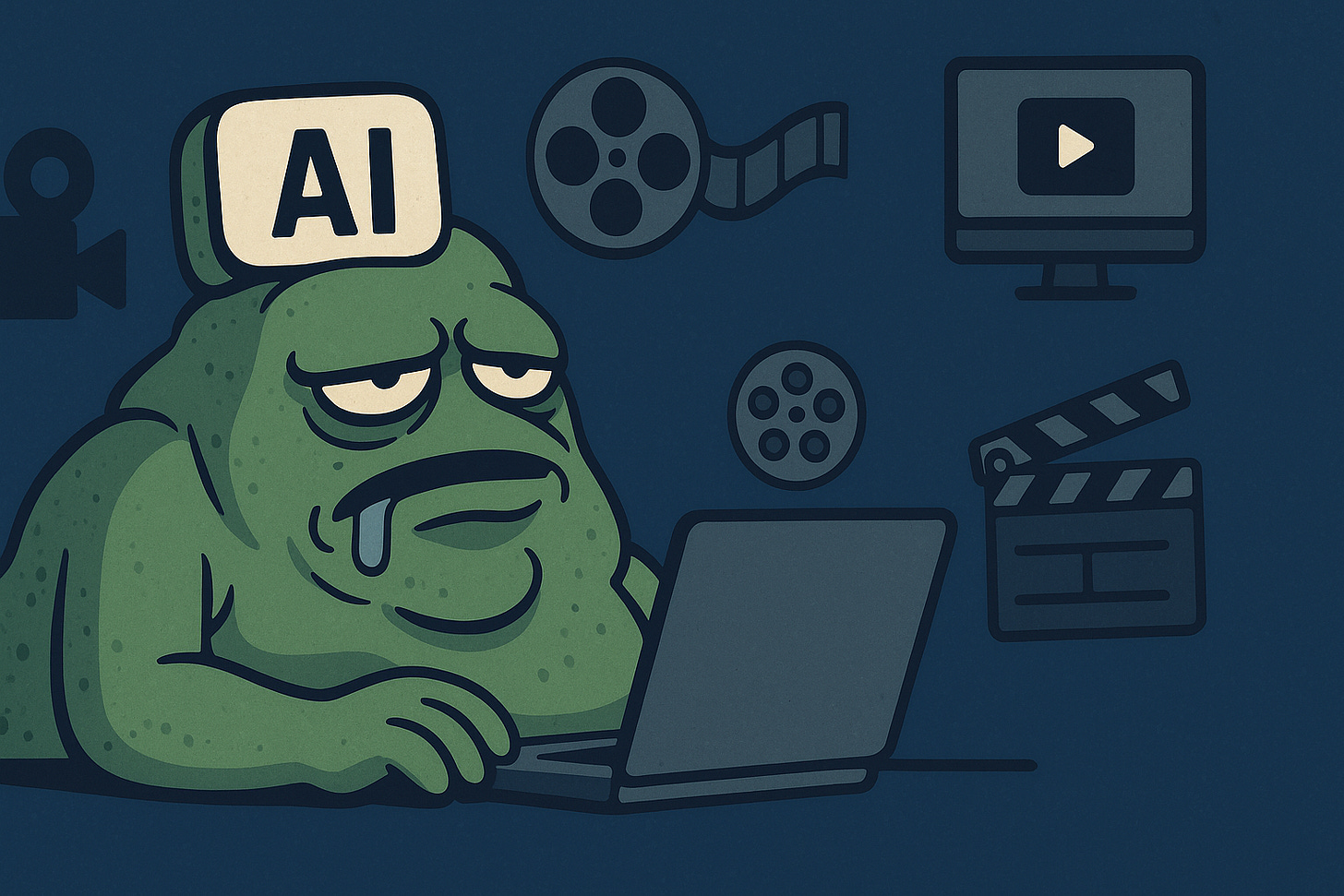Thoughts About AI Slob
At Relai, we recently released a fully AI-made commercial spot, and this got me thinking about AI slob and whether creators are getting lazier…
Joël here! 👋
It’s been a few weeks since I last wrote about AI.
I could be doing this daily, as there is so much going on, but I was busy.
Over at Relai, we’ve been hard at work and experimenting with AI.
Not only for work, but also to create content. From YouTube thumbnails to motion graphics and even entire videos.
Source: YouTube
This video is our first trial with fully AI-generated content. OK, not entirely, as we also edited some sound parts in the video.
While we don’t see a future where AI will replace a human in front of the camera, it can definitely be helpful for advertising clips such as this one.
But, as you can imagine, there have been some comments underneath the video, calling it an AI slob.
It doesn’t matter if you’re a long-time reader or a new subscriber; you should know that the moment someone leaves feedback, I start thinking about it.
Which is what this post is all about today!
It’s About Quality, Not Speed
It doesn’t matter if you have ever created AI content yourself or if you’ve consumed it.
You know right away what I mean when I say it looks cheaply made and very ChatGPT-like.
This is where the term AI slob comes from, as it’s immediately visible that the piece of content has been made with a few lazy prompts.
But there is a big difference to me between this and highly produced content.
To break this idea down, here is how much time we spent on each step and how much into detail we went as a team to create our 2-minute clip.
Storytelling (4 hours) - We utilized ChatGPT and Claude to develop a script, following multiple rounds of editing and prompting.
Outlining (1 hour) - We used Gemini to create a single document that combined the scenes, copy, and prompts for collaboration.
Scene creation (10 hours) - We utilized various tools, including Veo, Gemini, ChatGPT, ElevenLabs, and Haro, to create the single clips as well as audio based on the script.
Editing (3 hours) - We utilized Veo and some Premiere Pro magic to edit the entire video, add layers, and make minor sound corrections.
Distribution (1 hour) - I utilized Claude to create the social media copy, develop a few versions for YouTube, and refine elements such as meta tags and transcriptions.
In total, we spent approximately 25 hours creating this video. Several meetings preceded the workflow outlined above, and ongoing communication occurred through our team chat tool.
We could have cut that time by 80% if we had just stuck to the easy way.
But the reception, about three impressions and over 500 comments across all channels, wouldn’t have been as high.
We deliberately chose to create this workflow because we wanted cinema-quality and not AI-generated slob.
AI Is Great but Not Perfect (Yet)
While the style of our video is impressive, considering how bad AI-generated videos were just two years ago, I’m sure we will achieve a life-like look in the coming months.
And this is a key point in the entire AI slob debate.
For now, you can easily see if an image is made with AI.
Whether it be the Pope’s fingers, some weird movement with the lips, or how picture-perfect skin tones look.
Some hints suggest that something has been created using AI.
This will continue to be the case for the next couple of months, if not for a year.
But if you read between the lines and hear from AI experiments at Disney, Netflix, or even Paramount, you’ll realize that we’re much closer to an actual AI film industry than you might think.
Therefore, the faster this reality takes hold, the better it will be for AI content creation, as it will be even easier to identify sloppy work.
Either way, if you’re a consumer, now is the best time to enjoy and follow along as this journey continues.
Oh, and if you want to see more AI content from Relai, make sure to subscribe to our YouTube channel.



